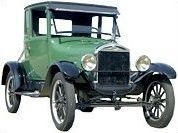Whether you accept it, avoid it or live somewhere in between, insurance coverage has become a defining issue for our profession. Patients increasingly expect to use their benefits, practitioners want to be compensated fairly for their time and expertise, and the system itself remains – at best – fragmented. The encouraging news is that coverage has expanded in meaningful ways. The challenging news is that reimbursement, across the board, remains inadequate.
Vision and Decision
The essence of social entrepreneurship is the understanding that the goal of business is to achieve not only personal financial objectives, but also larger social objectives. People go into business for many different reasons, and some are not satisfied with simply making money. A social entrepreneur wants social gain, which means social change.
This seems like a new idea, but I am not sure it really is. When I got serious about learning about business, I started reading biographies of business innovators. One in particular that gave me a lot to think about was The People's Tycoon: Henry Ford and the American Century, by Steven Watts.

Henry Ford was a fascinating, complex, brilliant and troubled guy. He was both a committed populist and a ruthless union-buster, publicly worshipped and privately cruel. His lifelong passion for tinkering with his hands reshaped American culture. A fabulously successful capitalist, he was also a social visionary. Acupuncturists ought to be interested in him, and not only as a case study of extremes of yin and yang within a single personality.
In 1879, when Ford left the farm he grew up on to find his future in Detroit, the idea of a "horseless carriage" was just that: an idea, a long shot, a dream with no apparent avenue to reality. To say that most people were skeptical about the uses of a horseless carriage would be an understatement. Ford's early prototypes were considered a public nuisance because they "made a racket and scared the horses."1 For those of us who dream of acupuncture becoming fully integrated into 21st century American society, it can be easy at times to become discouraged, but compared to Henry Ford in the late 19th century, we look positively realistic and conservative. For a long time, very few people other than Ford imagined automobiles as anything other than a bizarre curiosity. The idea that they would one day become integral to modern life was inconceivable.
Of course, many of us now have very mixed feelings about America's relationship with automobiles. We have collectively begun to question the love affair with cars that began with Henry Ford just about 100 years ago. For those of us who are committed to creating a healthier future for our country and the world, however, it is worth examining that love affair and thinking about what we can learn from it. Henry Ford and his horseless carriage faced many of the same challenges we acupuncturists do: He had to figure out how to explain to his potential customers what he had to offer and why they could use it, despite its unfamiliarity; and he had to build a market where none had previously existed.
In order to accomplish these things, he had to become very clear about his vision. Early in his career as a businessman, Ford repeatedly encountered the same problem: His financial backers wanted him to design an expensive luxury car with a high profit margin, while what he wanted was a simple, economical car that ordinary people could afford. He resigned from the Henry Ford Company in 1902, because he felt that his investors didn't care about sharing the technology he had developed with the public as a whole, but intended only "to get the largest price possible for each car. The main idea seemed to be to get the money."1 What had been the Henry Ford Company was reorganized as the Cadillac Company. Ford himself went on to found the Ford Motor Company, which six years later would produce the Model T.
It was the Model T that fulfilled Ford's vision of a reliable, inexpensive car that middle and working-class people could afford. By 1920, almost half of the cars on the road in America were Model Ts. According to Steven Watts, "citizens of modest means purchased it in unprecedented numbers. More than any other single development, it put America on wheels in the early 20th century."1 And this is exactly what Ford wanted: to improve ordinary people's lives through technology. He accomplished this by means of capitalism. As he pointed out in 1903, "When you make (cars) cheaper, you can get more people with enough money to buy them. The market will take care of itself."1
Ford dealt with the problem of having both an unfamiliar technology and a nonexistent market for it by focusing on the issue of economic accessibility. It's easy to apply this to acupuncture in America in the 21st century. If we make acupuncture cheaper, we can get more people with enough money to use it. The market will take care of itself.
Acupuncturists need to decide if we want to provide Cadillacs or Model Ts. There is arguably a market for Cadillacs; plenty of people still drive them. But it wasn't the Cadillac that got everybody driving, it was the Model T. What is it that we want? Do we only want to get the money? Or do we want to do for alternative medicine what Henry Ford did for cars?
Reference
- Watts, Steven. The People's Tycoon: Henry Ford and the American Century. Knopf, 2005.


